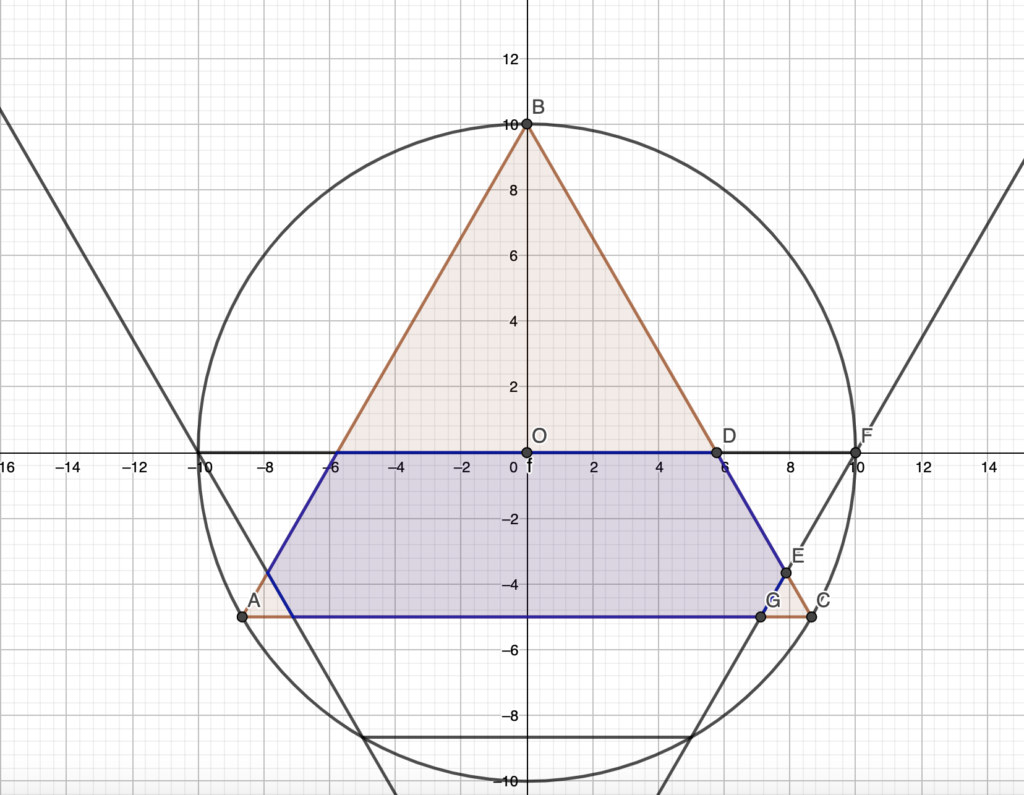Today there was a national maths team competition simulation on phiquadro.it and, although I was really on fire, I was really upset I had no time to solve this geometry problem, so I decided to publish it here.

In the figure above, the equilateral triangle ABC has circumradius = 10. An isosceles trapezoid is drawn with base on the diameter and oblique sides parallel to the triangle’s sides. Find the value of the blue area.
Now let . The side of the equilateral triangle equals
.
So .
Also, since DEF is equilateral and , we have
.
But we actually know because of Thales Theorem: it equals
So and
So now, since also ECG is equilateral, the blue area equals the area of the big triangle minus the area of triangle with side a minus 2 times the area of triangle with side c:
The problem requested an approximation of 100 times the area, which equals